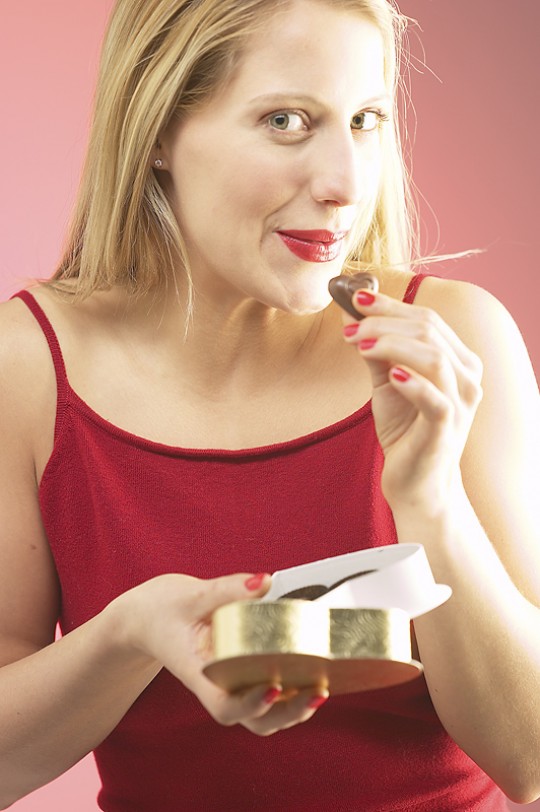Finding a Role for Chocolate in a Healthy Diet
Finding a Role for Chocolate in a Healthy Diet

If that trove of Valentine’s Day truffles has your conscience heavy, it’s time to take a serious look at the health benefits of chocolate.
Since ancient Mayans guzzled the first molten drink (then, a bitter, chocolate soup) almost 2,000 years ago, we’ve learned quite a bit about the fascinating fruit of the cacao tree.
For a balanced look at the delicacy – and its health implications – we spoke to URMC cardiologist and community health scientist Dr. Thomas A. Pearson. A renowned expert in the metabolic effects of chocolate (thanks to his tenure as a research consultant to the Chocolate Manufacturers Association of the United States in the late 80’s), Pearson recently penned a review of chocolate studies for the Advisory Committee of the 2010 U.S. Dietary Guidelines.
Scripts: Over the years, much research has celebrated the health benefits of chocolate. What’s all the fuss about?
Pearson: Let’s start with the mood benefits first. Chocolate, of course, is a sensuous treat; in fact, it’s one of the few food substances that melts at 97 degrees Fahrenheit – just a couple of degrees below the human body temperature – so it feels rich and velvety, almost buttery in the mouth. What’s more, it contains theobromines – a chemical shown to have mood-boosting properties.
From a physical health stance, several studies have reported chocolate to lower blood pressure, improve blood flow (by causing vessels to dilate), and even reduce risk for clotting (by making platelets less “sticky”) – all important pieces of a well-oiled circulatory system.
Scripts: What is it in chocolate that’s behind these benefits?
Pearson: It’s difficult to parse out exactly which ingredients in chocolate are responsible for which health effects – it could be any combination of chemicals. Of course, you have the mood-boosting theobromine, but chocolate is also rich in flavinoids – plant chemicals that not only give cocoa it’s flavorful, pungent taste, but also boost antioxidant powers, protecting cells against environmental toxins. (That said, it’s important to point out that flavinoids aren’tonly found in chocolate; plenty of other foods pack them in powerful doses – like onions, apples, blueberries and green tea, to name a few.)
What’s more, one of the primary fats in cocoa butter – stearic acid – has been proven to notraise blood cholesterol in the body (so, theoretically, if stearic acid is eaten in place of other fats, it could help to lower cholesterol levels overall).
Scripts: Granted, that’s great news — but isn’t “chocolate” a very fluid term here in the U.S. We have chocolate milk, to chocolate cheesecake, chocolate cereals…
Pearson: True – not all chocolate is created equal. There even are imposters, like carob chips, that aren’t chocolate at all.
When it comes to real chocolate, the concentration of cocoa (and therefore, the inherent flavinoids, stearic acid, and theobromines) varies incredibly, depending on the other ingredients mixed in. In general, the higher the concentration of cocoa butter in a piece of chocolate, the lower the percentage of milk fat and other fats that have been shown to raise cholesterol levels.
Scripts: But as you mentioned, chocolate foods are often high in fat and sugar.
Pearson: Of course. Even the good fat in cocoa butter – stearic acid – still crams nine calories a gram. In fact, chocolate bars rations were fed to World War II soldiers precisely because they were such a dense, calorie-rich “survival” food!
That said, assuming you’re careful to build it into your daily calorie allowance, a nice piece of dark chocolate isn’t too bad of a food choice – especially if it’s mixed with heart-healthy nuts, like almonds, walnuts of pistachios. Remember, there are no bad foods – just bad diets. Enjoying a reasonable amount of chocolate can be a real pleasure, and a smart part of keeping your diet enjoyable and sustainable.
To learn more about Dr. Pearson’s work with the U.S. Dietary Guidelines, click here.
For more on the “delicious history” of chocolate, check out this WebMD slideshow.
###
* The above story is adapted from materials provided by University of Rochester Medical Center
![]() ______________________________________________________________________
______________________________________________________________________



















